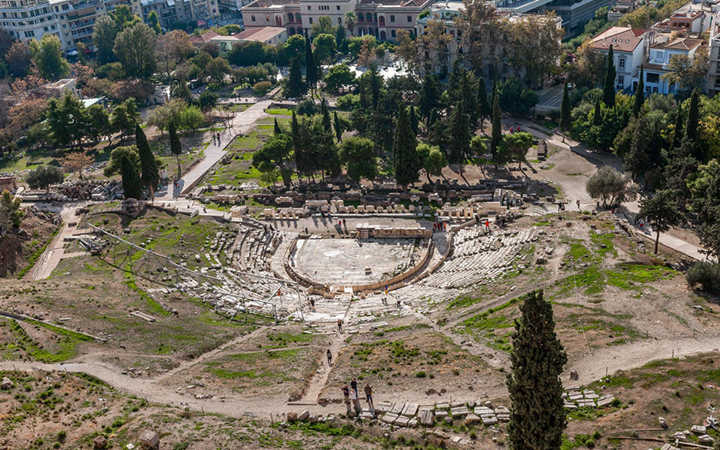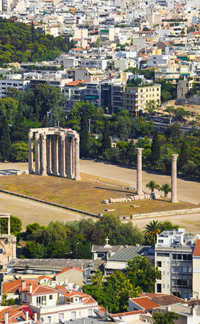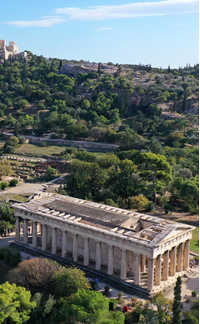Nestled on the southern slope of the Acropolis in Athens lies one of the most historically significant theaters in the world: the Theatre of Dionysus. Revered as the birthplace of classical Greek drama, this ancient venue is where the masterpieces of Aeschylus, Sophocles, Euripides, and Aristophanes were first performed — laying the foundation for Western theater as we know it.
Origins and Development
Dedicated to Dionysus, the god of wine, revelry, and theater, the earliest form of the theatre likely began as a simple circular area used for choral performances and religious festivals in the 6th century BC. Over time, it evolved into a full-fledged performance venue.
The stone structure we see today began taking shape in the 4th century BC under the leadership of Athenian statesman Lycurgus. It could once accommodate up to 17,000 spectators — a testament to both the popularity of drama and the importance of communal gatherings in Athenian culture.
Architectural Features
The theatre was designed in the typical Greek style with a semi-circular arrangement that allowed excellent acoustics and visibility for spectators. The orchestra, a circular space in the center, served as the primary performance area, while the skene (a low stage building) provided a backdrop and space for actors to change costumes. Tiered marble seating rose in arcs around the orchestra, with the most prestigious front-row seats (proedria) reserved for priests and important officials.
Several of these VIP seats, carved with names and decorated with ornate designs, are still visible today — offering a direct link to the elite of ancient Athens.
Cultural Significance
The Theatre of Dionysus was the heart of the City Dionysia, a major Athenian festival held each spring to honor the god Dionysus. During the event, dramatic competitions featured tragedies and comedies written specifically for the occasion. These festivals were not mere entertainment; they were civic, religious, and political ceremonies that brought the entire city together.
Playwrights competed for prestige, and their works tackled philosophical, political, and social issues — from divine justice to democracy and war. The theatre thus functioned as a powerful educational and cultural institution, shaping Athenian identity and thought.
Decline and Rediscovery
Though still in use during the Roman period — when modifications included a more elaborate stage — the theatre eventually fell into disrepair as public interest shifted. In later centuries, its ruins were buried and forgotten until archaeological excavations in the 19th century brought it back into the spotlight.
Today, although only parts of the original structure survive, visitors can still sit on the ancient stone seats and imagine the booming voice of an actor delivering lines to a crowd thousands strong.
Visiting the Theatre Today
The Theatre of Dionysus is part of the wider Acropolis archaeological complex and can be visited with the same entry ticket. Its location at the foot of the Acropolis hill makes it an easy and rewarding stop on your route through Athens’ ancient treasures.
Visitor Info
- Location: Acropolis South Slope, Athens
- Entry: Included in the Acropolis admission ticket (€30 April–October, €15 November–March)
- Opening Hours:
- 01/09 – 15/09: 08:00 – 19:30
- 16/09 – 30/09: 08:00 – 19:00
- 01/10 – 15/10: 08:00 – 18:30
- 16/10 – 31/10: 08:00 – 18:00
- Closed: January 1, March 25, May 1, Easter Sunday, December 25–26
Why You Should Visit
More than just stones and ruins, the Theatre of Dionysus is a space where art, religion, and politics once collided in a dramatic display of human experience. Standing in its ancient seats, you’re not just observing history — you’re stepping into the birthplace of theater itself. Whether you're a drama lover, history buff, or casual traveler, this site is a true highlight of ancient Athens.


















